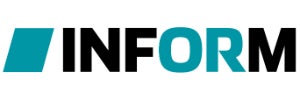Advanced tracking technologies deliver critical information
One of the biggest challenges facing ground handlers is how to keep track of their Unit Load Devices (ULDs), dollies, and containers. Given that there are close to one million ULDs used by airlines worldwide, the task is an important one. Still, according to Air Cargo Eye, an estimated 5% of ULDs across the global, which equates to approximately 45,000 units valued at $50 million, go missing. As you can imagine, the failure to locate and manage ULDs effectively can result in significant financial losses, as well as declines in profitability, on time performance, employee productivity, passenger satisfaction, and equipment and workforce allocation. Unfortunately, manual, or outdated processes simply don’t suffice. What is needed today are advanced tracking technologies that can deliver critical information such as the exact location of a ULD or dolly and their status (i.e., loaded or unloaded, in good condition or damaged).
A growing market for tracking solutions
Considering the challenges, it is easy to understand why technologies addressing this problem represent a growing market. A report by K. Berg Insight stated that cargo loading unit tracking devices had reached over 11 million worldwide, with a compound annual growth rate (CAGR) of 24.4% and projected growth to reach 33.1 million by 2026. Airport infrastructure projects, passenger demand, and sustainability goals are all factors driving airlines, airports, and ground handlers to deploy advanced technologies for the optimisation of their ULD management and tracking. For cargo handlers, the goals are simple:
- Having the ability to quickly identify the location of equipment to avoid losses in productivity by employees scattering about trying to find a dolly or learn its status.
- Avoiding unnecessary empty runs.
- Minimising the purchase of additional dollies, containers, and ULDs when they might not be needed, and avoiding maintenance on this equipment before necessary.
Delivering essential data and visibility
Applying Artificial Intelligence (AI)-driven optimisation software with telematics, these goals can be achieved. Together, they can provide the fast identification of ground handling equipment which, in turn, can enable real-time allocation and assignment of dollies, containers, and ULDs. Leveraging telematics with process-driven data eradicates blind spots on the apron and gives ground handlers full visibility and improved operational awareness relating to their equipment.
The AI/telematic solution’s role in the management and tracking of ground handling equipment is to deliver, in real-time, specific location and status information, such as whether a ULD is ready for pick-up, which dock it was delivered to, its loading time, if it has been loaded to a dolly, and the dolly’s and ULD’s parking spot on the apron.
Optimisation software assists in determining the best allocation and assignment of equipment to the correct loading or unloading task. It provides a full view of the process relating to the ULD’s position and designated destination location. Ground handlers are able to access real-time, relevant information for each ULD. Telematics’ role is to identify a dolly’s status, inclusive of its location and loaded or unloaded status. Ground handlers can use this information to facilitate faster, more efficient feeding of dollies into the loading process. Knowing how many dollies are usually empty in parking positions also helps ground handlers determine their optimum fleet size for improved resource management and cost containment.
Capturing other critical data
These technologies also serve to optimise other processes through the capture of valuable data, such as a dolly’s maintenance history. This enables ground handlers to avoid relying on predetermined scheduled that don’t take into account whether maintenance is actually needed, which inadvertently incurs unnecessary labour and material costs. By relying on the technology’s data, the best decisions can be made which support productivity, safe operations, and fiscal objectives. The solution’s data capture role is also integral to effective disruption management, including improved dispatching of equipment when a contingency arises. There is also the added benefit of supporting service level agreements (SLAs) by enabling the ability to pivot and respond to disruptions when necessary.
Keeping it moving
Today more than ever, it is important that airlines, airports, and ground handlers take advantage of advanced technologies that enable them to optimise their processes for improved overall performance. Any lapse in a ground handling process will have a decided ripple effect, causing negative impacts across all areas of operations, from resource management and on time performance, to staff productivity, the passenger experience, and financial performance. Leading-edge, AI-powered optimisation software and advanced telematics can positively affect all of these areas while also enabling improved decision-making and disruption management.
About INFORM
INFORM develops software for the optimisation of business processes using digital decision making based on artificial intelligence and operations research. The company supplements classic IT systems and increases the profitability and resilience of many companies. While data management software only provides information, INFORM systems can analyse large amounts of data in a matter of seconds, calculate numerous decision variants, and suggest the best possible solution to the user for implementation. Today, more than 900 software engineers, data analysts, and consultants support more than 1,000 customers worldwide in manufacturing, trade, airports, ports, logistics, banks, telecommunication, and insurance companies. Processes including sales planning, production planning, personnel deployment, logistics and transport, inventories, and supply chain management, as well as fraud prevention in insurance, telecommunication, and payment transactions are optimised. For more information, please visit our website.
About GroundStar
With GroundStar, INFORM offers the most comprehensive software suite for the optimisation of aviation processes currently on the market. It fulfils all requirements of the companies involved in airline and airport operations and covers a wide range of solutions, such as ground handling, aircraft engineering, airport operations, and hub and turnaround management. GroundStar helps customers to run their operations smoothly and cost-effectively while improving punctuality and passenger satisfaction at the same time. INFORM has been developing scientifically substantiated optimisation algorithms for this purpose. As a global leader with over 200 installations in more than 170 airports worldwide, INFORM has proven its effective and long-term capacity for innovation.

